A New Stripline-Based Atmospheric Pressure Microwave Plasma Sheet Source Designed for Surface Modification of Materials
Abstract
:1. Introduction
2. The Concept of the Stripline-Based MPSS
3. Numerical Analysis
3.1. Geometry
3.2. Governing Equation and Boundary Conditions
4. Calculation Results
4.1. Open Configuration
4.2. Semi-Closed Configuration
4.3. Calculation Results for Closed Configuration
5. Experiment
5.1. Experimental Arrangement
5.2. Experimental Results
6. Summary and Conclusions
Author Contributions
Funding
Institutional Review Board Statement
Informed Consent Statement
Data Availability Statement
Conflicts of Interest
References
- Moisan, M.; Zakrzewski, Z.; Pantel, R. The Theory and Characteristics of an Efficient Surface Wave Launcher (Surfatron) Producing Long Plasma Columns. J. Phys. Appl. Phys. 1979, 12, 219–237. [Google Scholar] [CrossRef]
- Moisan, M.; Zakrzewski, Z.; Rostaing, J.C. Waveguide-Based Single and Multiple Nozzle Plasma Torches: The TIAGO Concept. Plasma Sources Sci. Technol. 2001, 10, 387–394. [Google Scholar] [CrossRef]
- Martínez-Aguilar, J.; González-Gago, C.; Castaños-Martínez, E.; Muñoz, J.; Calzada, M.D.; Rincón, R. Influence of Gas Flow on the Axial Distribution of Densities, Temperatures and Thermodynamic Equilibrium Degree in Surface-Wave Plasmas Sustained at Atmospheric Pressure. Spectrochim. Acta Part B At. Spectrosc. 2019, 158, 105636. [Google Scholar] [CrossRef]
- Su, L.; Kumar, R.; Ogungbesan, B.; Sassi, M. Experimental Investigation of Gas Heating and Dissociation in a Microwave Plasma Torch at Atmospheric Pressure. Energy Convers. Manag. 2014, 78, 695–703. [Google Scholar] [CrossRef]
- Zhang, W.; Wu, L.; Liu, Z.; Tao, J.; Huang, K. Experimental Investigation on Improving the Efficiency of Power Coupling from the Incident Microwave to the Discharge in a Plasma Torch. Phys. Plasmas 2020, 27, 033510. [Google Scholar] [CrossRef]
- Mizeraczyk, J.; Jasiński, M.; Nowakowska, H.; Dors, M. Studies of Atmospheric-Pressure Microwave Plasmas Used for Gas Processing. Nukleonika 2012, 57, 241–247. [Google Scholar]
- Baeva, M.; Gier, H.; Pott, A.; Uhlenbusch, J. Studies on Gas Purification by a Pulsed Microwave Discharge at 2.46 GHz in Mixtures of N2/NO/O2 at Atmospheric Pressure. Plasma Chem. Plasma Process. 2001, 21, 225–247. [Google Scholar] [CrossRef]
- Hun Shin, D.; Cheol Hong, Y.; Cheon Cho, S.; Sup Uhm, H. Abatement of SF6 and CF4 Using an Enhanced Kerosene Microwave Plasma Burner. Phys. Plasmas 2006, 13, 114504. [Google Scholar] [CrossRef]
- Kabouzi, Y.; Moisan, M.; Rostaing, J.-C.; Trassy, C.; Guerin, D.; Keroack, D.; Zakrzewski, Z. Abatement of Perfluorinated Compounds Using Microwave Plasmas at Atmospheric Pressure. J. Appl. Phys. 2003, 93, 9483–9496. [Google Scholar] [CrossRef]
- Rincón, R.; Marinas, A.; Muñoz, J.; Calzada, M.D. Hydrogen Production from Ethanol Decomposition by Microwave Plasma TIAGO Torch. Int. J. Hydrog. Energy 2014, 39, 11441–11453. [Google Scholar] [CrossRef]
- D’Isa, F.A.; Carbone, E.A.D.; Hecimovic, A.; Fantz, U. Performance Analysis of a 2.45 GHz Microwave Plasma Torch for CO2 Decomposition in Gas Swirl Configuration. Plasma Sources Sci. Technol. 2020, 29, 105009. [Google Scholar] [CrossRef]
- Wnukowski, M.; Jamróz, P. Microwave Plasma Treatment of Simulated Biomass Syngas: Interactions between the Permanent Syngas Compounds and Their Influence on the Model Tar Compound Conversion. Fuel Process. Technol. 2018, 173, 229–242. [Google Scholar] [CrossRef]
- Straňák, V.; Tichý, M.; Kříha, V.; Scholtz, V.; Šerá, B.; Špatenka, P. Technological Applications of Surfatron Produced Discharge. J. Optoelectron. Adv. Mater. 2007, 9, 852–857. [Google Scholar]
- Ehlbeck, J.; Schnabel, U.; Polak, M.; Winter, J.; von Woedtke, T.; Brandenburg, R.; von dem Hagen, T.; Weltmann, K.-D. Low Temperature Atmospheric Pressure Plasma Sources for Microbial Decontamination. J. Phys. Appl. Phys. 2011, 44, 013002. [Google Scholar] [CrossRef] [Green Version]
- Jasiński, M.; Goch, M.; Mizeraczyk, J. Urządzenie Mikrofalowe do Generacji Płaszczyzny Plazmowej. Przegląd Elektrotechniczny 2010, 86, 112–114. [Google Scholar]
- Jasiński, M.; Mizeraczyk, J. Plasma Sheet Generated by Microwave Discharge at Atmospheric Pressure. IEEE Trans. Plasma Sci. 2011, 39, 2136–2137. [Google Scholar] [CrossRef]
- Czylkowski, D.; Jasiński, M.; Mizeraczyk, J. Novel Low Power Microwave Plasma Sources at Atmospheric Pressure. Przegląd Elektrotechniczny 2012, 88, 39–42. [Google Scholar]
- Jasiński, M.; Goch, M.; Mizeraczyk, J. Urządzenie Plazmowe do Obróbki Powierzchni Elementów (Plasma Device for Treatment of Material Surfaces). PL Patent No. 215139 B1, 31 October 2013. [Google Scholar]
- Nowakowska, H.; Czylkowski, D.; Hrycak, B.; Jasiński, M. Characterization of a Novel Microwave Plasma Sheet Source Operated at Atmospheric Pressure. Plasma Sources Sci. Technol. 2018, 27, 085008. [Google Scholar] [CrossRef]
- Czylkowski, D.; Hrycak, B.; Jasiński, M. Compact Microwave Plasma Device for Surface Treatment. Przegląd Elektrotechniczny 2018, 1, 30–33. [Google Scholar] [CrossRef] [Green Version]
- Hrycak, B.; Sikora, A.; Moczała, M.; Czylkowski, D.; Jasiński, M.; Dors, M. Atmospheric Pressure Microwave Argon Plasma Sheet for Wettability Modification of Polyethylene Surfaces. IEEE Trans. Plasma Sci. 2019, 47, 1309–1315. [Google Scholar] [CrossRef]
- Czylkowski, D.; Hrycak, B.; Sikora, A.; Moczała-Dusanowska, M.; Dors, M.; Jasiński, M. Surface Modification of Polycarbonate by an Atmospheric Pressure Argon Microwave. Materials 2019, 12, 2418. [Google Scholar] [CrossRef] [PubMed] [Green Version]
- Sikora, A.; Czylkowski, D.; Hrycak, B.; Moczała-Dusanowska, M.; Łapiński, M.; Dors, M.; Jasiński, M. Surface Modification of PMMA Polymer and Its Composites with PC61BM Fullerene Derivative Using an Atmospheric Pressure Microwave Argon Plasma Sheet. Sci. Rep. 2021, 11, 9270. [Google Scholar] [CrossRef] [PubMed]
- Moczała, M.; Karpińska, M.; Poznar, M.; Dobryszycki, P.; Sikora, A. Application of Argon Plasma Sheet in the Etching Process of Calcium Carbonate Crystals for AFM Tests. Mater. Sci.-Pol. 2018, 36, 75–79. [Google Scholar] [CrossRef] [Green Version]
- Pollak, J.; Moisan, M.; Zakrzewski, Z. Long and Uniform Plasma Columns Generated by Linear Field-Applicators Based on Stripline Technology. Plasma Sources Sci. Technol. 2007, 16, 310–323. [Google Scholar] [CrossRef]
- Pollak, J.; Moisan, M.; Kéroack, D.; Boudam, M.K. Low-Temperature Low-Damage Sterilization Based on UV Radiation through Plasma Immersion. J. Phys. Appl. Phys. 2008, 41, 135212. [Google Scholar] [CrossRef]
- Bilgiç, A.M.; Voges, E.; Engel, U.; Broekaert, J.A.C. A Low-Power 2.45 GHz Microwave Induced Helium Plasma Source at Atmospheric Pressure Based on Microstrip Technology. J. Anal. At. Spectrom. 2000, 15, 579–580. [Google Scholar] [CrossRef]
- Narendra, J.J.; Grotjohn, T.A.; Asmussen, J. Microstripline Applicators for Creating Microplasma Discharges with Microwave Energy. Plasma Sources Sci. Technol. 2008, 17, 035027. [Google Scholar] [CrossRef]
- Tran, T.H.; You, S.J.; Park, M.; Kim, J.H.; Seong, D.J.; Shin, Y.H.; Jeong, J.R. Atmospheric Pressure Microplasma Source Based on Parallel Stripline Resonator. Curr. Appl. Phys. 2011, 11, S126–S130. [Google Scholar] [CrossRef]
- Berglund, M.; Grudén, M.; Thornell, G.; Persson, A. Evaluation of a Microplasma Source Based on a Stripline Split-Ring Resonator. Plasma Sci. Technol. 2013, 22, 055017. [Google Scholar] [CrossRef] [Green Version]
- Tran, T.H.; Kim, S.J.; You, S.J. Analysis of Impedance of Microwave Parallel Stripline Resonator Discharge Source for Application of Microplasma System at Atmospheric Pressure. Appl. Sci. Converg. Technol. 2019, 28, 113–121. [Google Scholar] [CrossRef]
- Wu, C.; Hopwood, J. Investigation of Instabilities in Microstrip-Sustained Microplasma. IEEE Trans. Plasma Sci. 2014, 42, 1629–1635. [Google Scholar] [CrossRef]
- Nowakowska, H.; Lackowski, M.; Moisan, M. Radiation Losses from a Microwave Surface-Wave Sustained Plasma Source (Surfatron). IEEE Trans. Plasma Sci. 2020, 48, 2106–2114. [Google Scholar] [CrossRef]
- Nowakowska, H.; Czylkowski, D.; Hrycak, B.; Jasiński, M. Numerical and Experimental Analysis of Radiation from a Microwave Plasma Source of the TIAGO Type. Plasma Sources Sci. Technol. 2021, 30, 095011. [Google Scholar] [CrossRef]
- COMSOL. RF Module User’s Guide Version 4.1; COMSOL AB: Stockholm, Sweden, 2010. [Google Scholar]
- Álvarez, R.; Alves, L.L. Two-Dimensional Electromagnetic Model of a Microwave Plasma Reactor Operated by an Axial Injection Torch. J. Appl. Phys. 2007, 101, 103303. [Google Scholar] [CrossRef]
- Nowakowska, H.; Jasiński, M.; Dębicki, P.S.; Mizeraczyk, J. Numerical Analysis and Optimization of Power Coupling Efficiency in Waveguide-Based Microwave Plasma Source. IEEE Trans. Plasma Sci. 2011, 39, 1935–1942. [Google Scholar] [CrossRef]
- Kabouzi, Y.; Calzada, M.D.; Moisan, M.; Tran, K.C.; Trassy, C. Radial Contraction of Microwave-Sustained Plasma Columns at Atmospheric Pressure. J. Appl. Phys. 2002, 91, 1008–1019. [Google Scholar] [CrossRef]
- Kabouzi, Y.; Moisan, M. Pulsed Microwave Discharges Sustained at Atmospheric Pressure: Study of the Contraction and Filamentation Phenomena. IEEE Trans. Plasma Sci. 2005, 33, 292–293. [Google Scholar] [CrossRef]
- Castaños-Martínez, E.; Moisan, M.; Kabouzi, Y. Achieving Non-Contracted and Non-Filamentary Rare-Gas Tubular Discharges at Atmospheric Pressure. J. Phys. Appl. Phys. 2009, 42, 012003. [Google Scholar] [CrossRef]
- Ridenti, M.A.; Spyrou, N.; Amorim, J. The Crucial Role of Molecular Ions in the Radial Contraction of Argon Microwave-Sustained Plasma Jets at Atmospheric Pressure. Chem. Phys. Lett. 2014, 595–596, 83–86. [Google Scholar] [CrossRef]
- Ridenti, M.A.; de Amorim, J.; Dal Pino, A.; Guerra, V.; Petrov, G. Causes of Plasma Column Contraction in Surface-Wave-Driven Discharges in Argon at Atmospheric Pressure. Phys. Rev. E 2018, 97, 013201. [Google Scholar] [CrossRef] [PubMed] [Green Version]

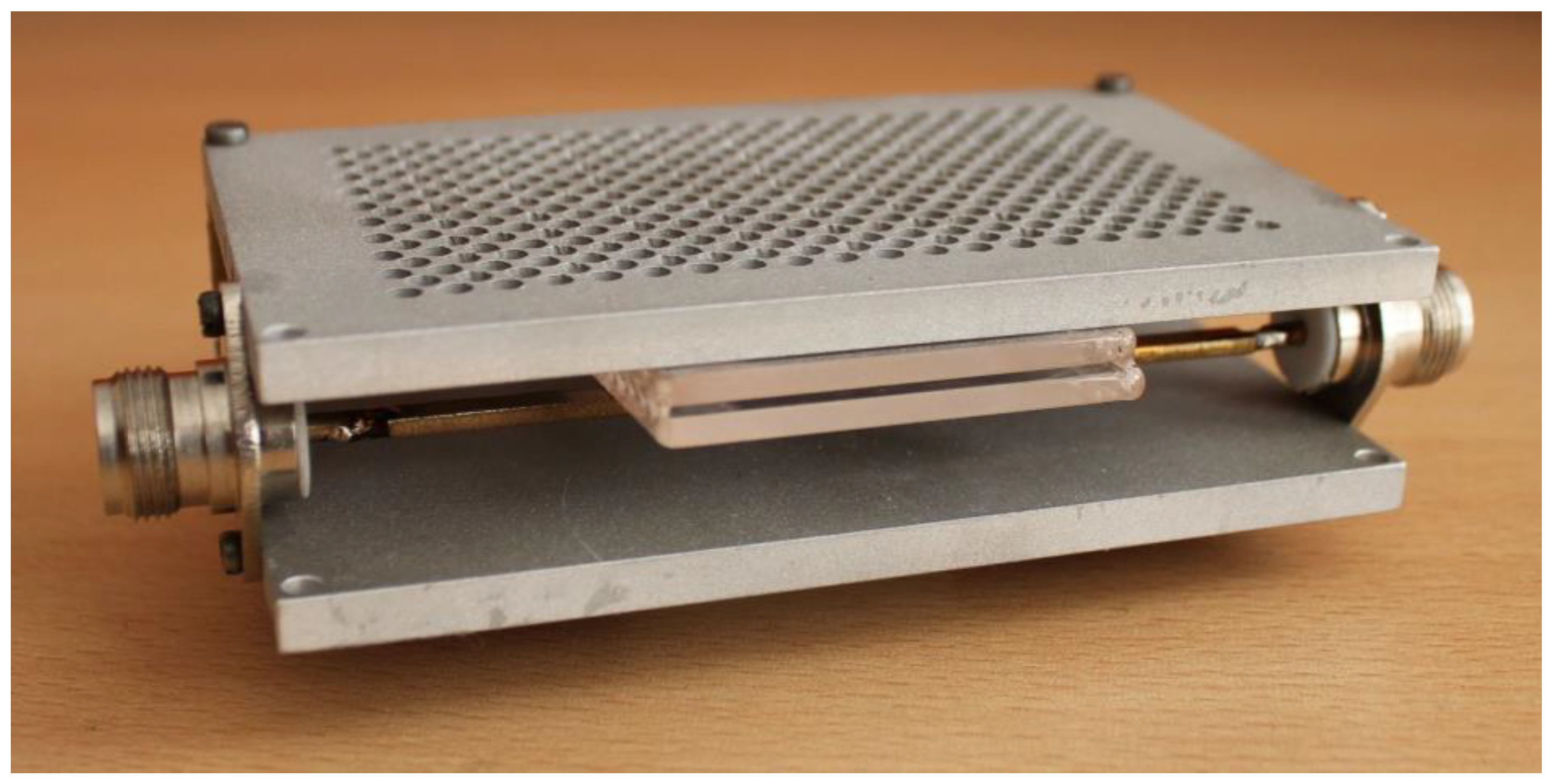
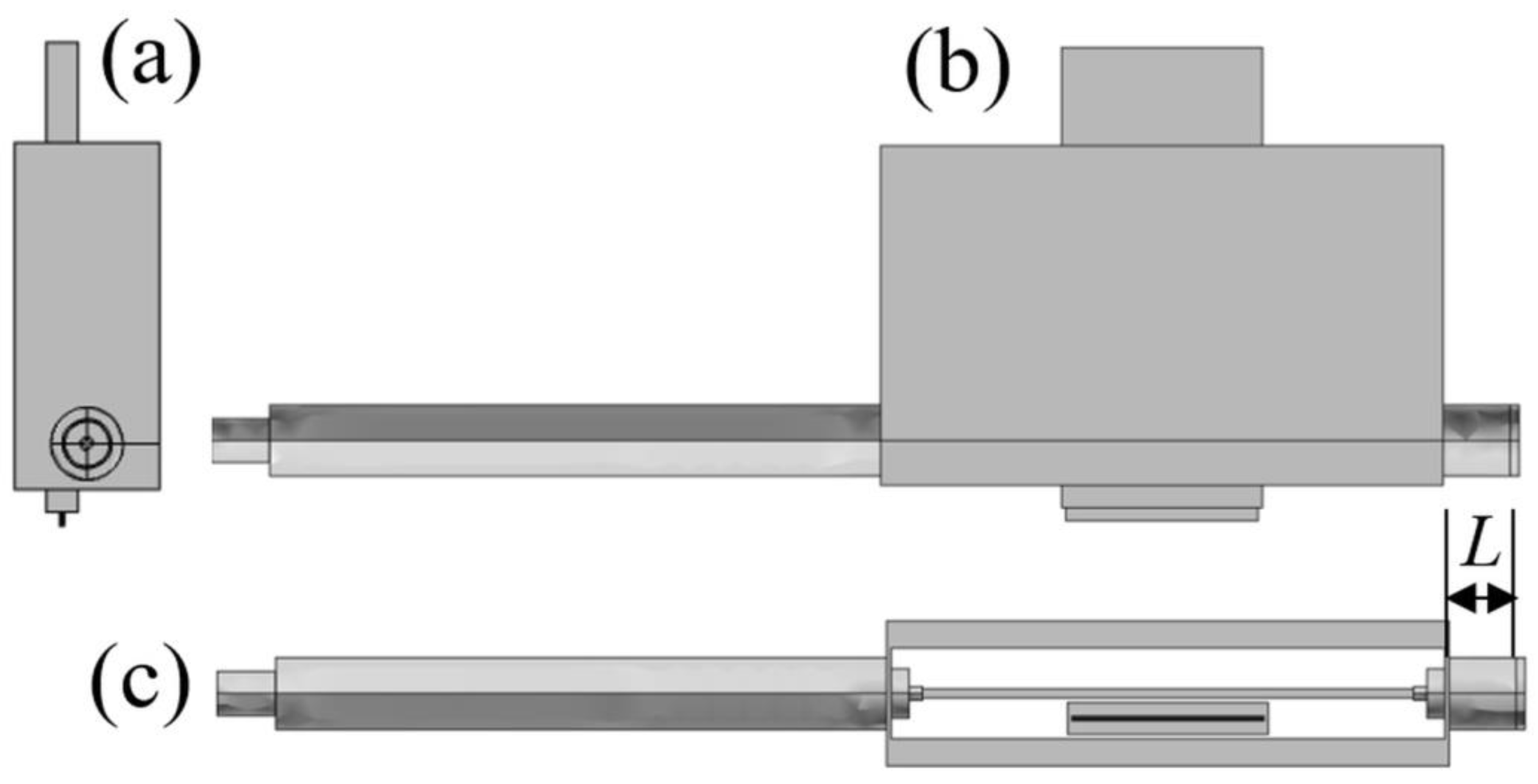
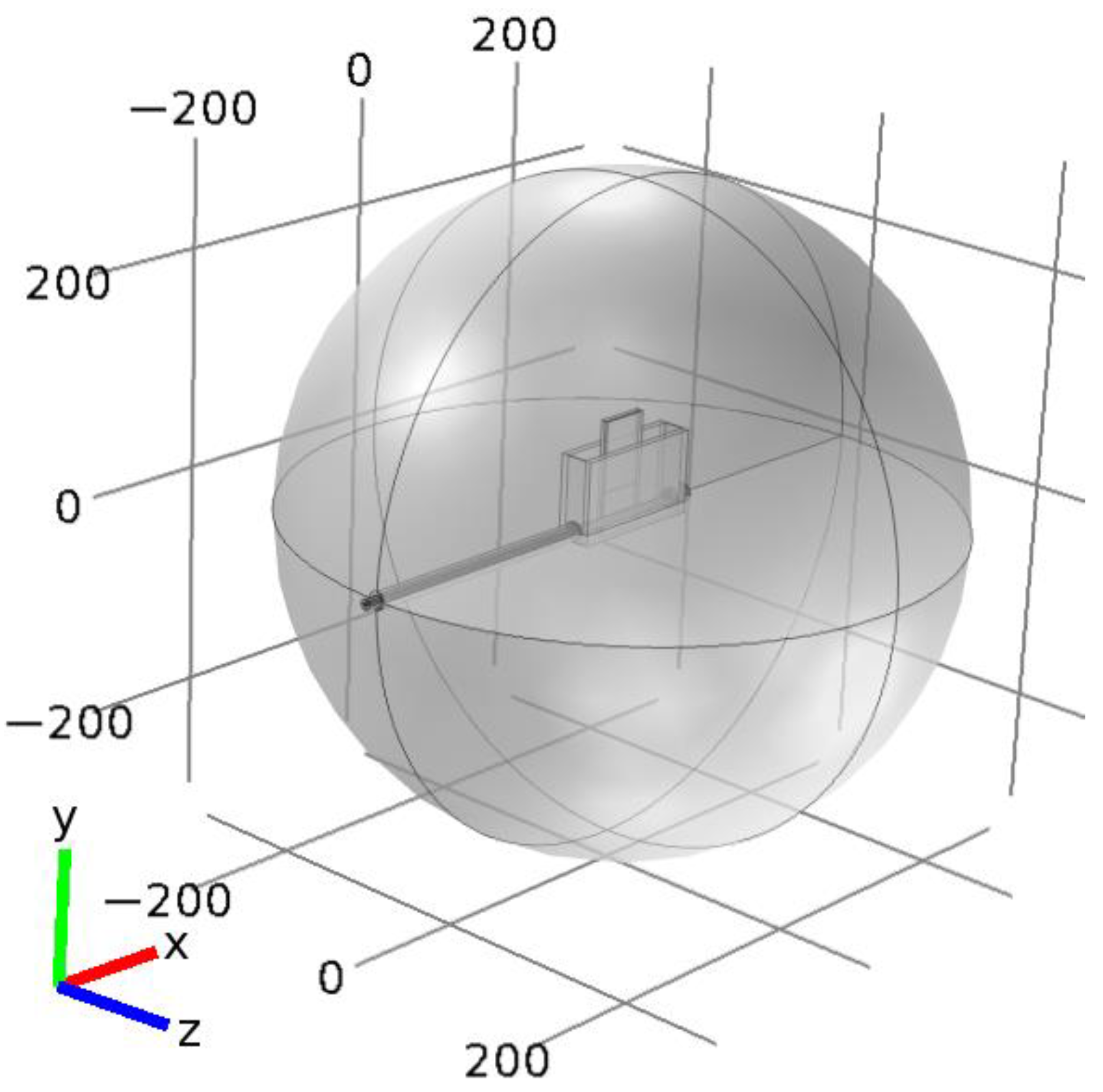
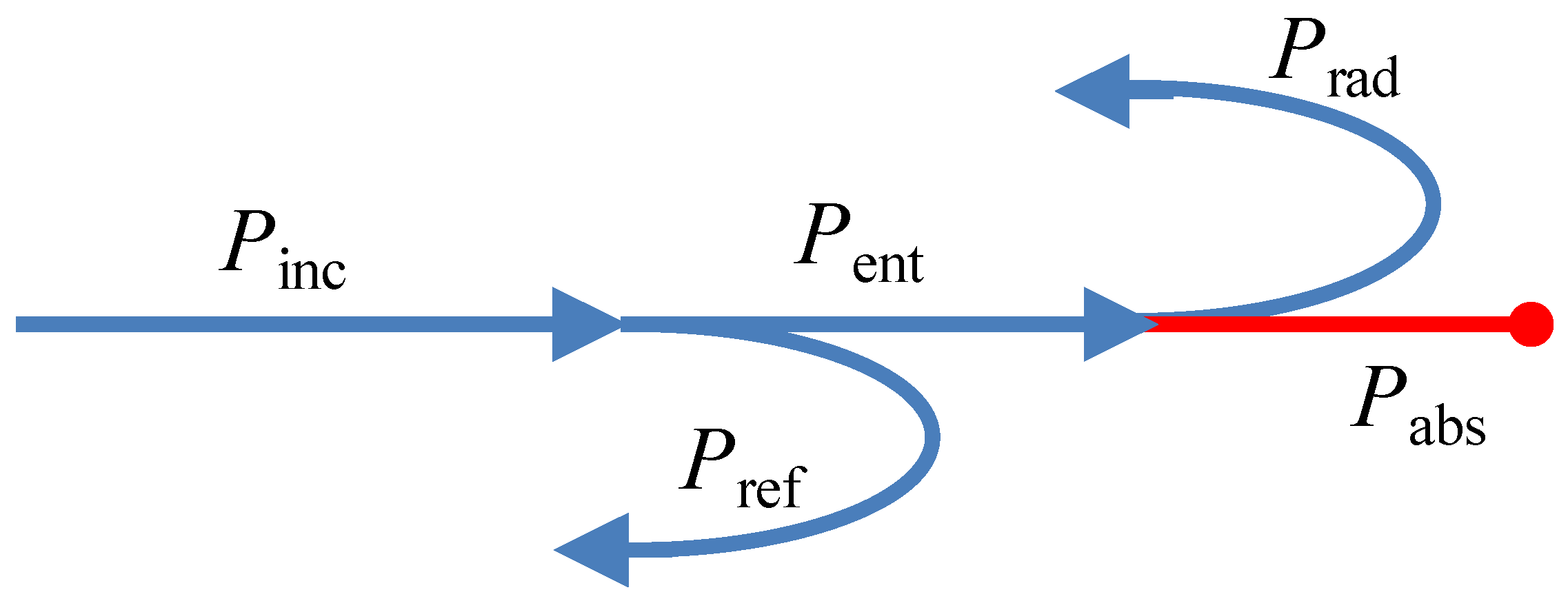
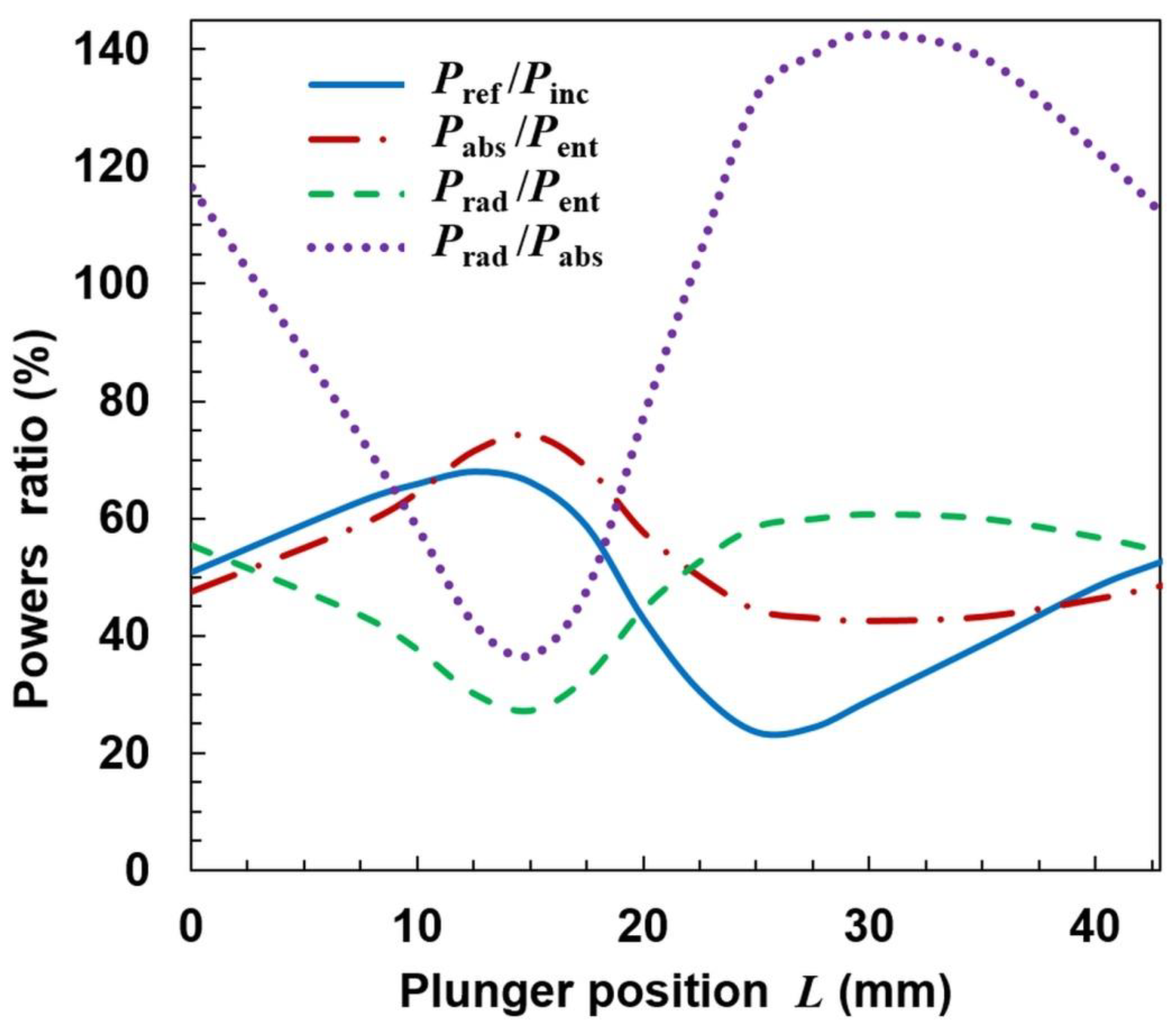
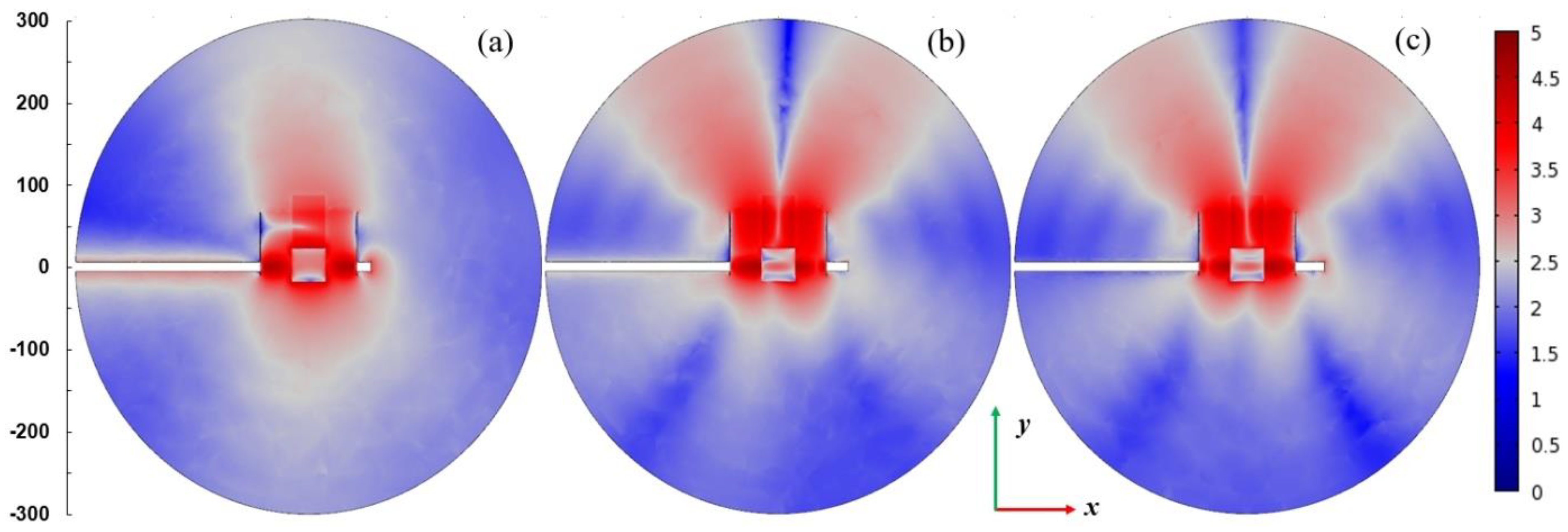


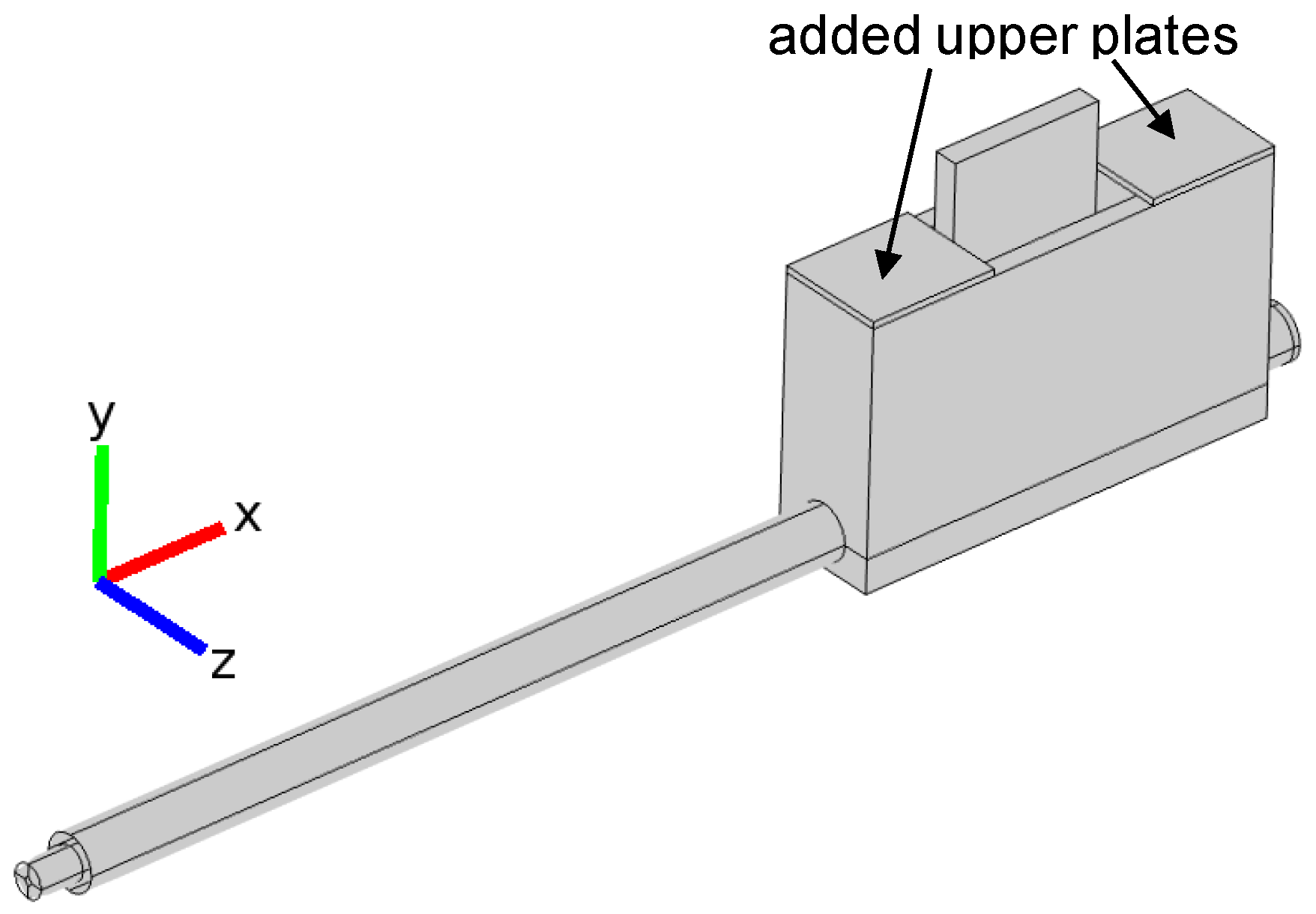
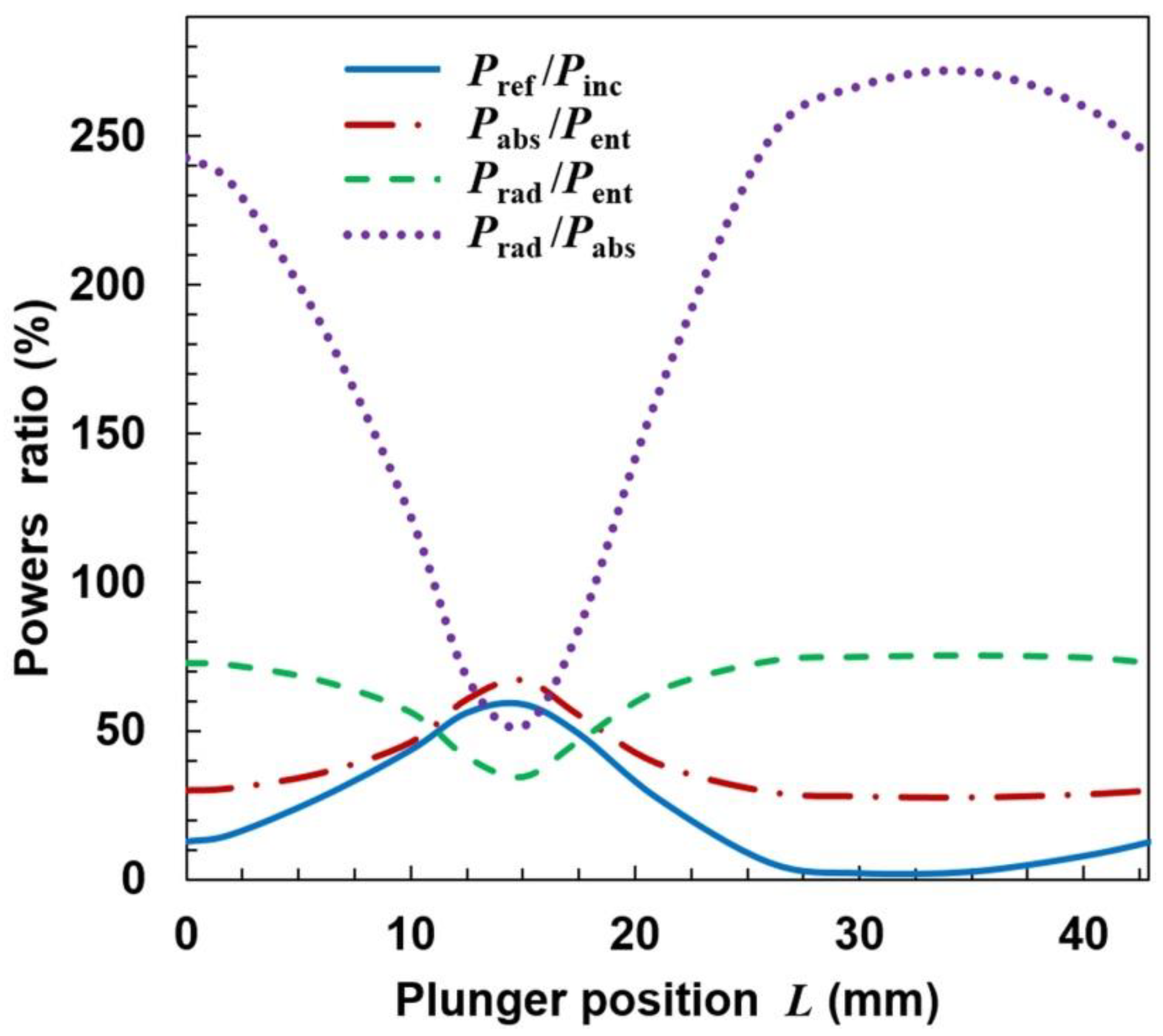
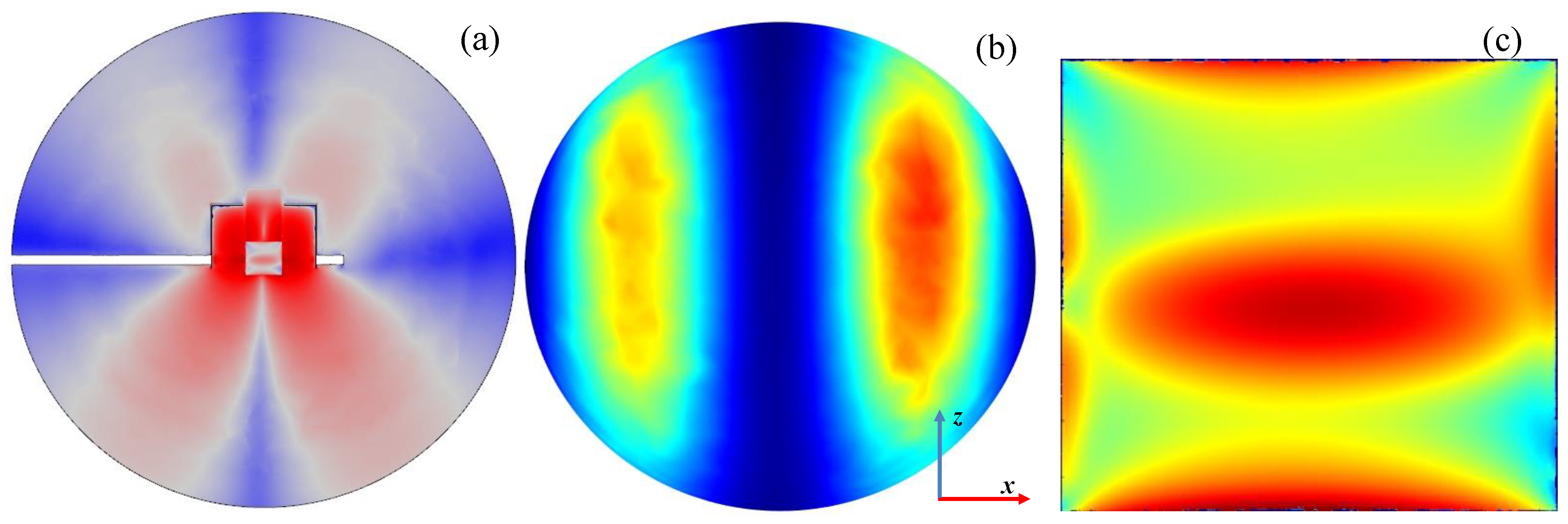

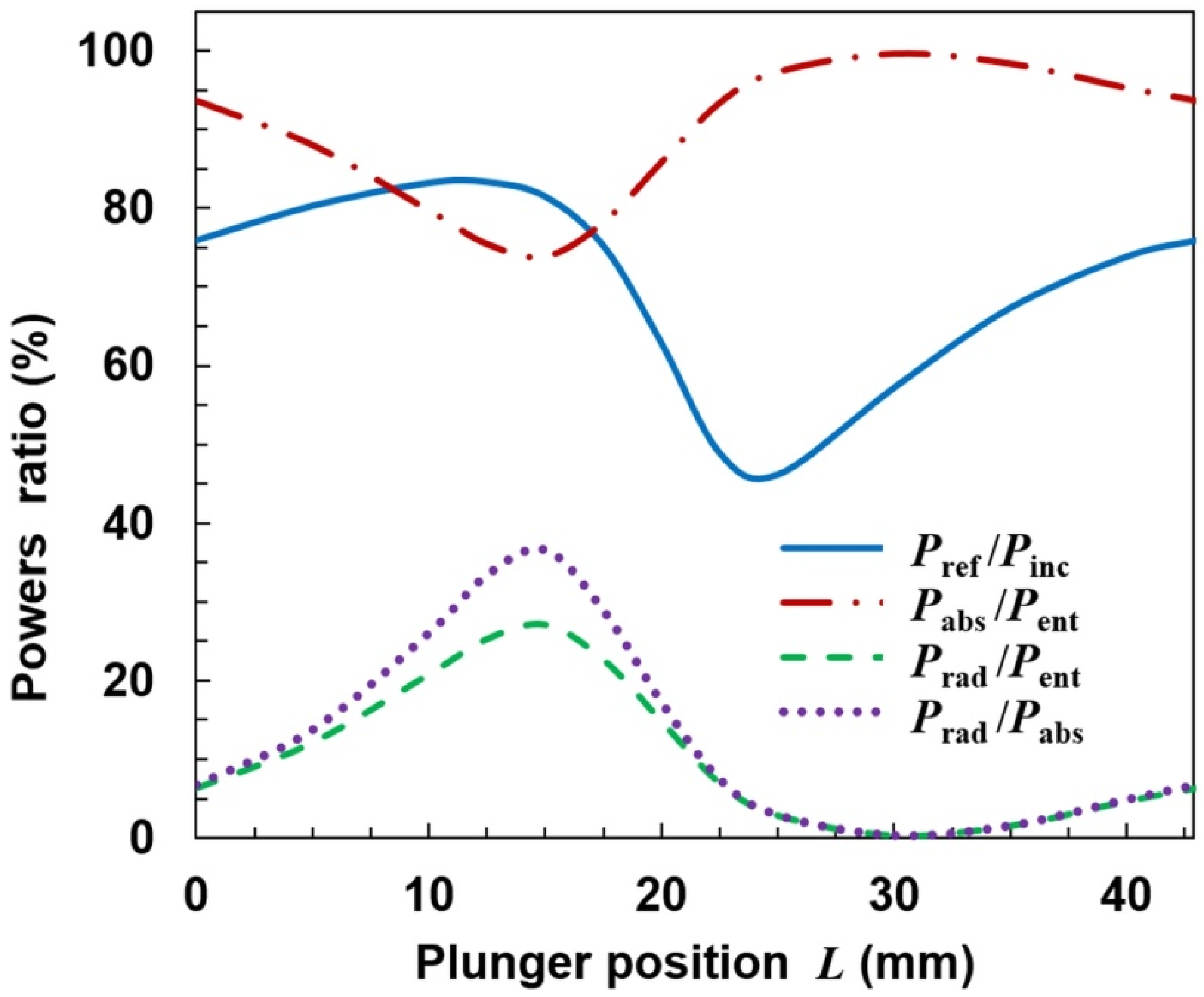



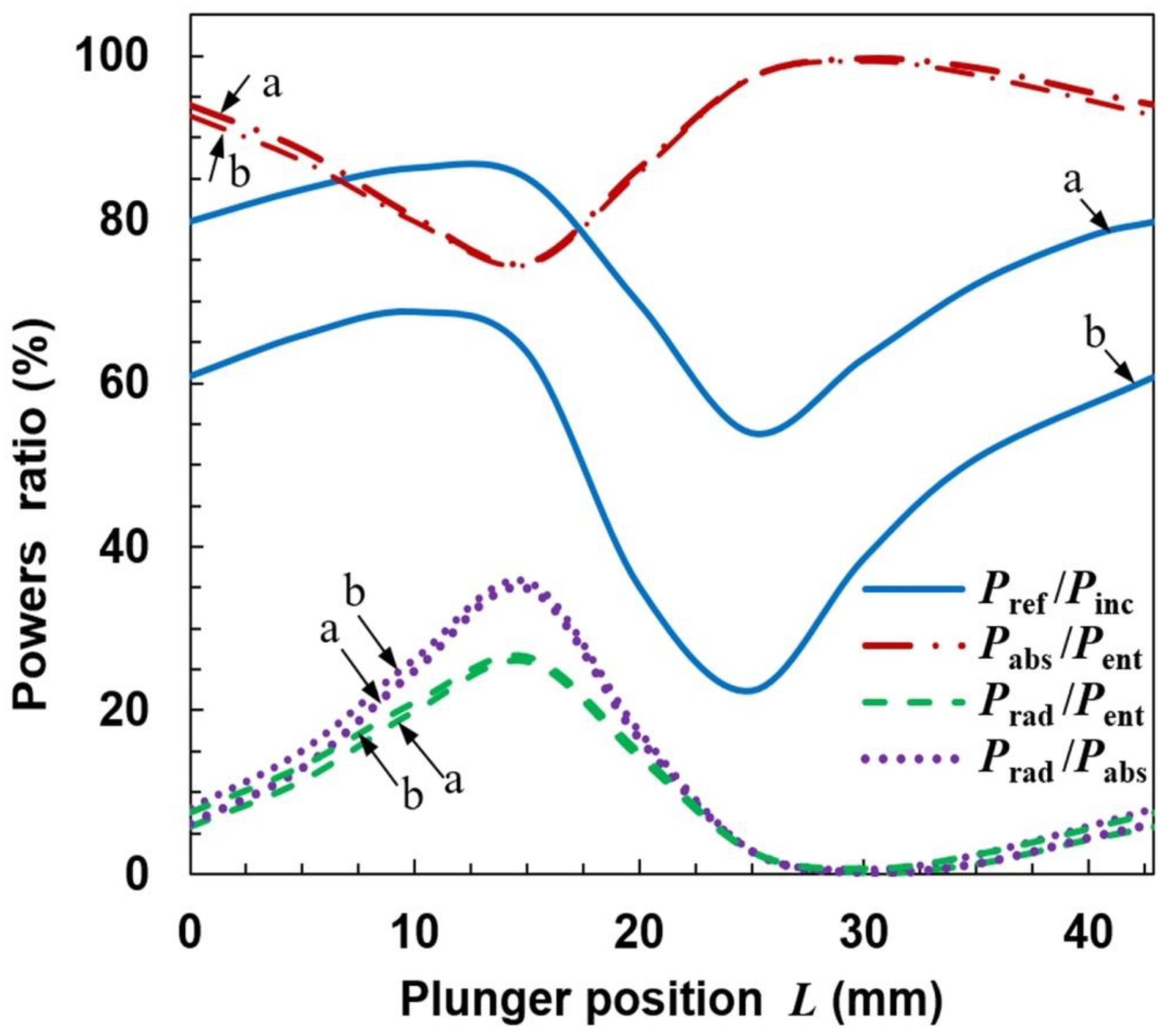
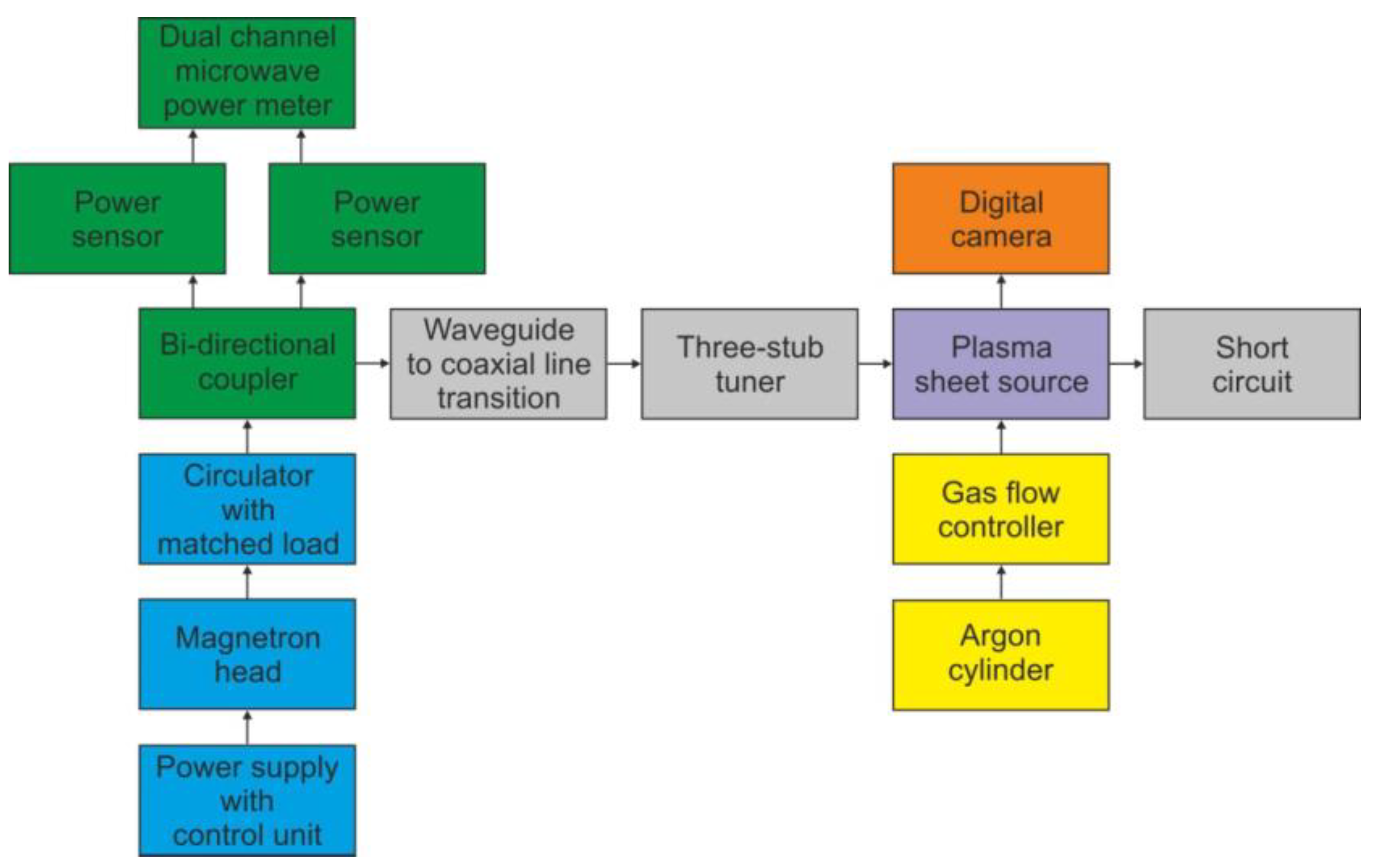

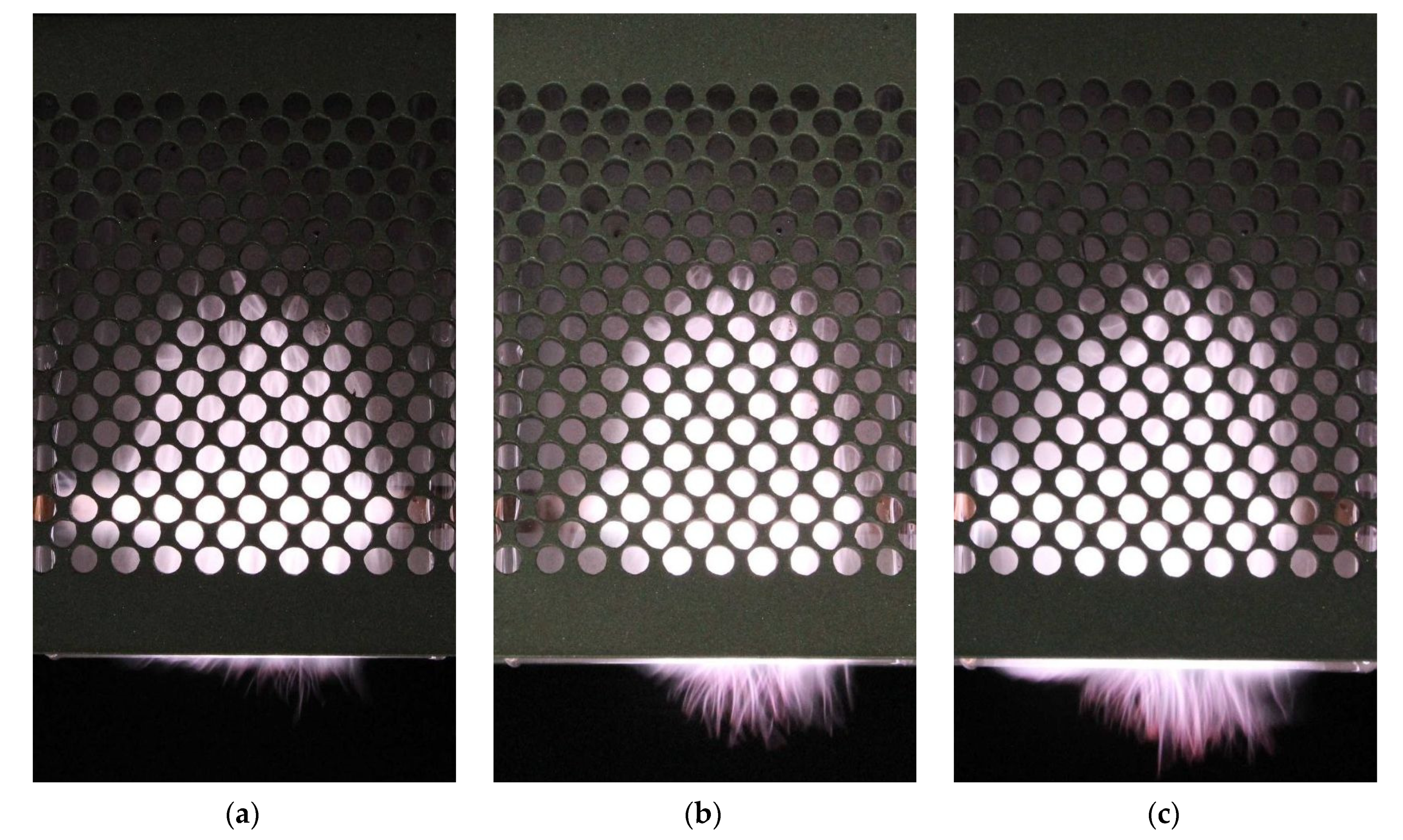
Publisher’s Note: MDPI stays neutral with regard to jurisdictional claims in published maps and institutional affiliations. |
© 2021 by the authors. Licensee MDPI, Basel, Switzerland. This article is an open access article distributed under the terms and conditions of the Creative Commons Attribution (CC BY) license (https://creativecommons.org/licenses/by/4.0/).
Share and Cite
Nowakowska, H.; Czylkowski, D.; Hrycak, B.; Jasiński, M. A New Stripline-Based Atmospheric Pressure Microwave Plasma Sheet Source Designed for Surface Modification of Materials. Materials 2021, 14, 7212. https://doi.org/10.3390/ma14237212
Nowakowska H, Czylkowski D, Hrycak B, Jasiński M. A New Stripline-Based Atmospheric Pressure Microwave Plasma Sheet Source Designed for Surface Modification of Materials. Materials. 2021; 14(23):7212. https://doi.org/10.3390/ma14237212
Chicago/Turabian StyleNowakowska, Helena, Dariusz Czylkowski, Bartosz Hrycak, and Mariusz Jasiński. 2021. "A New Stripline-Based Atmospheric Pressure Microwave Plasma Sheet Source Designed for Surface Modification of Materials" Materials 14, no. 23: 7212. https://doi.org/10.3390/ma14237212






